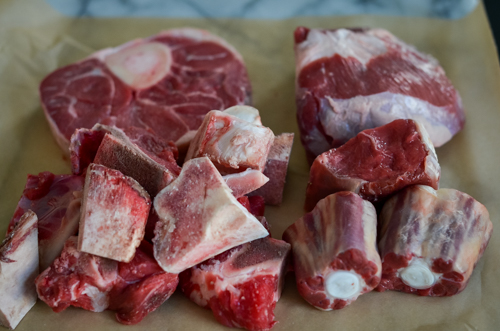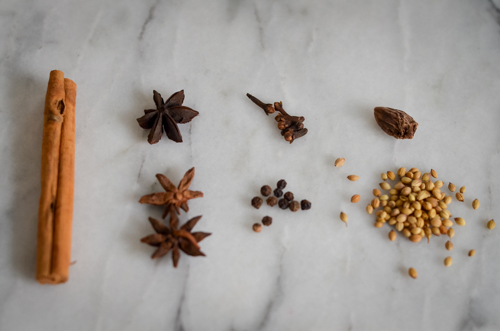BY JULIE TSANG-KAVANAGH
Since moving to Germany two years ago, I have become a more adventurous cook. One of the driving forces was the shortage of authentic Asian cuisine in the area. Thai, Japanese, Korean, Vietnamese, Chinese, and Indian used to be a regular part of our restaurant rotation in San Francisco. It’s been an interesting experience to go out of my culinary comfort zone and learn how to make my favorite Asian dishes using ingredients available in Germany. Today, I would like to share my experience in making a Vietnamese noodle soup called “Phở”.
Phở is a large bowl of steaming broth with meat, rice noodles, and aromatic herbs garnished on top. It never occurred to me to make it at home because it was so inexpensive and easy to find in San Francisco.
Quest for Pho: The Journey
A bowl of Beef Phở is only as good as the broth. Yes, the noodles should be “al dente”, the beef should be tender, and the sprouts should be crunchy but if the broth lacks flavor and depth, nothing else will make it taste good. At its most basic, a good broth is just the result of simmering the proper ingredients for a long time. When I started researching Beef Phở recipes, I was surprised at how few ingredients were needed – 2kg of various beef cuts and bones, onions, ginger, and a bundle of whole spices to give the Phở broth its distinct aroma.
The first challenge was finding the right beef cuts. German butchers usually don’t have a lot of cuts with bones in it and they often trim off most of the fat and tendons. The best type of bone for making stock is knuckle with some meat and tendon still attached. The cartilage dissolves and gives the stock a lovely richness that cannot be replicated with thickeners. The first few times I tried to buy beef bones “Rinderknochen” from a butcher, they gave me a puzzled look and asked, “Suppenfleisch oder Goulash vielleicht“? I found that sometimes REWE would have pre-packed marrow bones or “Suppenfleisch mit Knochen”. Once I became a regular customer at a neighborhood butcher, they started to throw in a bag of beef bones whenever I bought oxtail and “Suppenfleisch.” After some experimenting, I found that a combination of oxtail “Ochsenschwanz”, bones, “Suppenfleisch”, and beef shank “Beinscheiben” works pretty well. For my home-cooked version, I decided to skip tripes (lining of cow’s stomach) and tendons because the butcher might start looking at me like I have two heads! Another necessary beef cut is “tai” – thin round slices of lean sirloin. I have had good results with thinly sliced rumpsteak or shabu-shabu beef (thinly sliced beef for hot pot) from the Asian market.

Another key step is to char the ginger and onions over an open flame. Like most German kitchens, we have an induction range. To adapt, I use the oven’s grill function and put the rack at the top position. It made the kitchen a bit smoky but it got everything nice and charred.


The stock/broth can take up to 6 hours to make. However, with a pressure cooker, the time is reduced to roughly 2 hours. I usually make a big batch and freeze some of it.
Quest for Pho: The Outcome
I was pleasantly surprised with the results. The broth was rich and flavorful but not too salty or greasy (I usually skim some oil off the top). Many restaurants use MSG, an artificial flavor enhancer in the broth, which sometimes gave me a headache and made me thirsty afterward. Even after we move back to San Francisco, I will continue to make my own Phở because I like adjusting it to my family’s taste and making it healthier without sacrificing flavor. The true test will be serving it to my Vietnamese friends!

Awesome, Julie! You’ve inspired me. But I might need you to babysit me at the butcher!